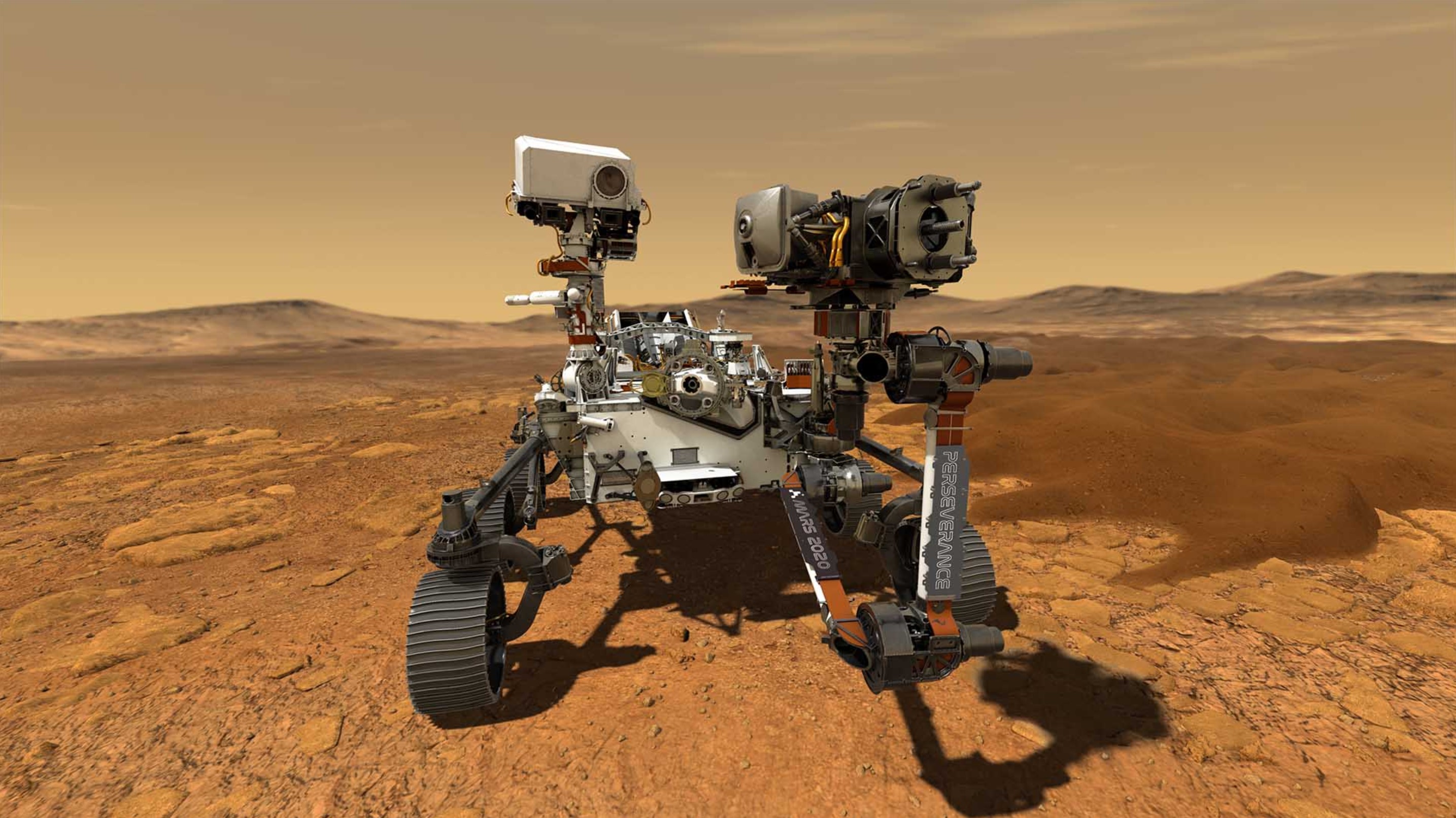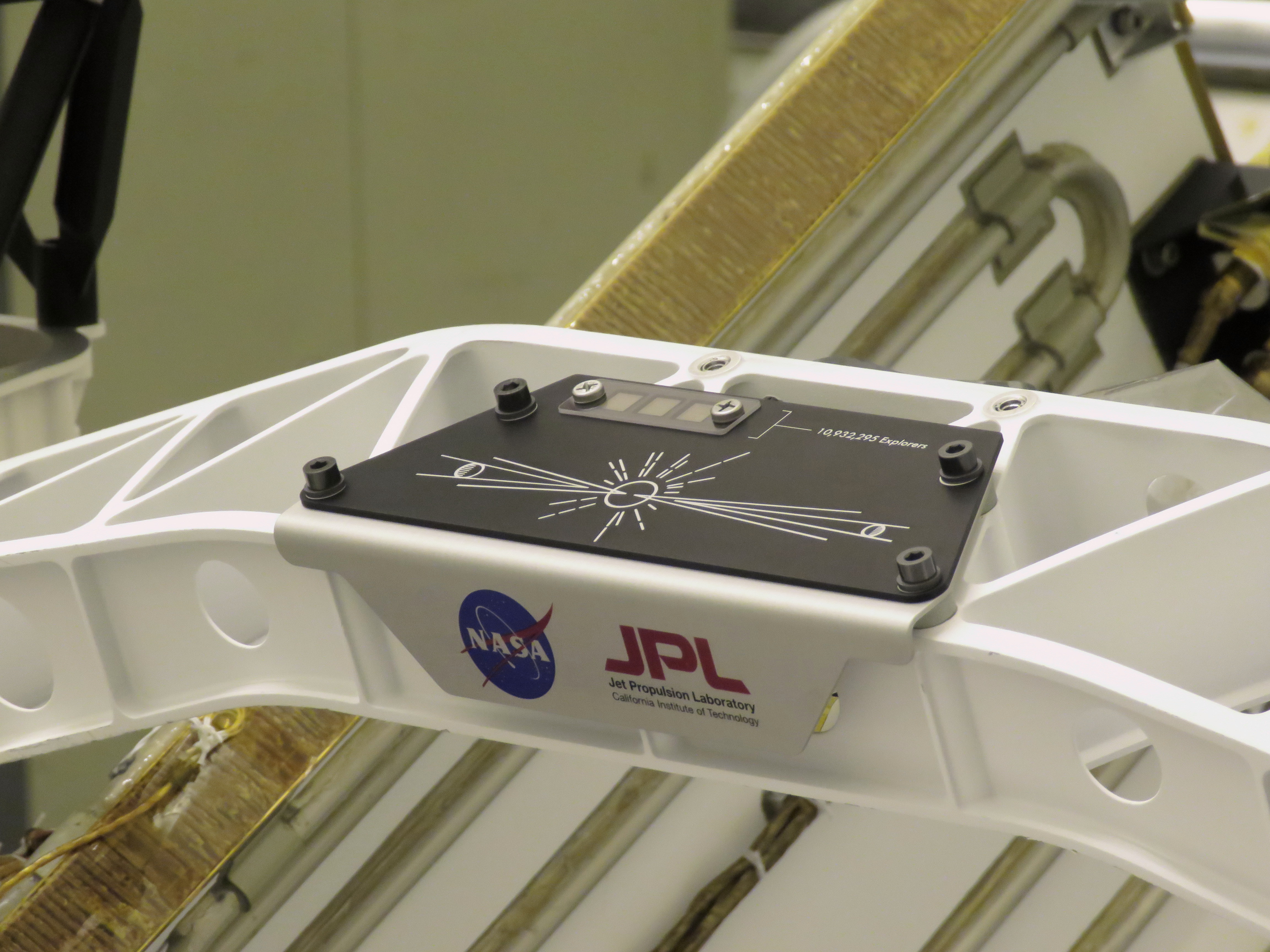Mars Perseverance has landed — what happens now?

Yesterday afternoon was an important moment in space exploration, with the successful landing of NASA’s Perseverance rover on Mars. Perseverance is the fifth rover NASA has sent to the red planet, but actually landing safely is only the first part of its mission.
Now Perseverance has some science to do. Lots of science, if everything goes according to plan, to help us better understand all things Mars. So here’s what happens to Perseverance, now that it can finally roam around the red planet.
- The best 3D printers to use at home
- Take to the skies yourself with Microsoft Flight Simulator
- Plus: Sennheiser could offer custom-fit earbuds the AirPods Pro can't beat
The journey so far
Perseverance’s mission officially began on July 30, 2020, when NASA launched the $3 billion Mars 2020 mission from Florida’s Cape Canaveral. Following a six-month journey to the red planet where nothing much happened, Perseverance was able to safely touchdown on February 18 at 15:55 ET. Then it began sending images of the local area back to Earth.
Hello, world. My first look at my forever home. #CountdownToMars pic.twitter.com/dkM9jE9I6XFebruary 18, 2021
Perseverance’s mission
The Perseverance rover is expected to continue exploration for at least one Martian year, which is 687 Earth days. Its goal is to explore the Jezero crater, which scientists have speculated was once an 820ft lake that existed around 3.5 billion years ago.
The area features a prominent river delta, which have been known to preserve microscopic fossils for billions of years on Earth. That means the crater is a key location in the search for evidence of life on Mars, even if that life only ever existed in microscopic form.
The area also promises to offer a plethora of different rock formations, which Perseverance can dig up and cache ready to be collected by manned Mars missions that may be passing through the area someday. Unfortunately, right now, successfully returning rock samples to Earth is something space agencies around the world haven’t been able to manage.
Perseverance is also set to test the possibility of aerial exploration in space. One key piece of equipment is the Ingenuity drone, a miniature helicopter that is designed to make up to five flights during the first 30 days of the Perseverance mission.
Get instant access to breaking news, the hottest reviews, great deals and helpful tips.
Each flight is only designed to last 90 seconds, reaching altitudes between 9.8 and 16.4 ft. But successful deployment would be the first time humans have achieved powered flight away from Earth. If everything goes according to plan, it offers new possibilities for extra-terrestrial exploration. Possibilities that aren’t restricted to slow-moving rovers.
Ingenuity flights have some level of autonomy, but each flight will be planned and scripted in advance by controllers at NASA’s Jet Propulsion Lab.
Perseverance's equipment
In addition to Ingenuity, Perseverance is packed with a lot of equipment to help it in its mission. One of the key pieces of tech involved is the Multi-Mission Radioisotope Thermoelectric Generator (MMRTG). Like the Curiosity rover before it, Perseverance will not be relying on solar panels for power. Instead, it will use the MMRTG’s plutonium core. The core produces heat as it decays, and that can be converted into electricity to recharge Perseverance’s batteries.
Using an MMRTG offers much better flexibility in the rover’s operations, and ensures that everything continues working when sunlight is at a premium, such as at night, during dust storms and throughout the Martian winter.

Other instruments on the rover include an X-ray fluorescence spectrometer, a ground-penetrating radar, atmospheric sensors, a Mastcam-Z stereoscopic imaging system, the SHERLOC camera for determining fine-scale mineralogy and detective organic compounds. It also has MOXIE, a new technology that will attempt to produce oxygen from the carbon dioxide in Mars’s atmosphere.
Perseverance also has a SuperCam suite, which is an upgraded version of the ChemCam suite from the Curiosity rover. SuperCam can offer imaging, chemical composition analysis, mineralogy in rocks from a distance and identify biosignatures from a distance.

Prior to launch Perseverance was also notable for letting members of the public submit their own names to travel to Mars with the rover. Nearly 11 million names were submitted and etched onto three fingernail-sized silicon chips with an electron beam. The chips are part of a larger anodized plate with engravings of Earth, Mars, and the Sun, and include 155 essays from the finalists in NASA’s “Name the Rover” contest.
NASA also included a plate as tribute to healthcare workers that have been working during the COVID-19 pandemic and a piece of Martian meteorite.
The rover also features a calibration target for its Mastcam-Z camera, which helps NASA ensure its color settings are correct based on current conditions. That piece of kit also functions as a sundial, and features imagery about Mars and Earth’s shared beginnings in the early days of the solar system.
What about the other Mars rovers?

Perseverance is the fifth American rover to reach Mars, following on from Curiosity, Opportunity, Spirit, and Sojourner. Of those four only Curiosity is still going, having celebrated the eighth anniversary of its landing last August.
Curiosity has lasted far longer than originally planned, but it still has a long way to go to beat the previous operational record set by Opportunity. That rover landed in January 2004 and remained in operation until June 2018. Unfortunately, it sent its last status during a major dust storm that blocked out the sun and prevented it from recharging its batteries.
The Spirit rover landed in January 2004, but unfortunately its wheels became trapped in sand causing NASA to lose communication in March 2010. Meanwhile, Sojourner, which was part of the Pathfinder mission, lasted three months between July and October 1997. However, since that mission was only intended to last up to a month, it can still be considered a success.
Sadly it appears that Sojourner’s battery was the cause of its eventual failure, and it got stuck in a charging and discharging cycle. The battery was needed to heat the rover’s electronics and without it some essential parts broke and cut off communication. But it did get a new lease of life in The Martian, helping astronaut Mark Watney figure out a way to communicate with Earth after being stranded on Mars.
Its final fate depends on whether you saw the movie or read the book. Spoiler: the book version did not get a happy ending.
Perseverance has already earned its place in NASA's history books, but time will tell if it segues into fiction. If it does discover life on Mars, then expect Perseverance to be a rover that returns to the public's attention time and time again.

Tom is the Tom's Guide's UK Phones Editor, tackling the latest smartphone news and vocally expressing his opinions about upcoming features or changes. It's long way from his days as editor of Gizmodo UK, when pretty much everything was on the table. He’s usually found trying to squeeze another giant Lego set onto the shelf, draining very large cups of coffee, or complaining about how terrible his Smart TV is.
